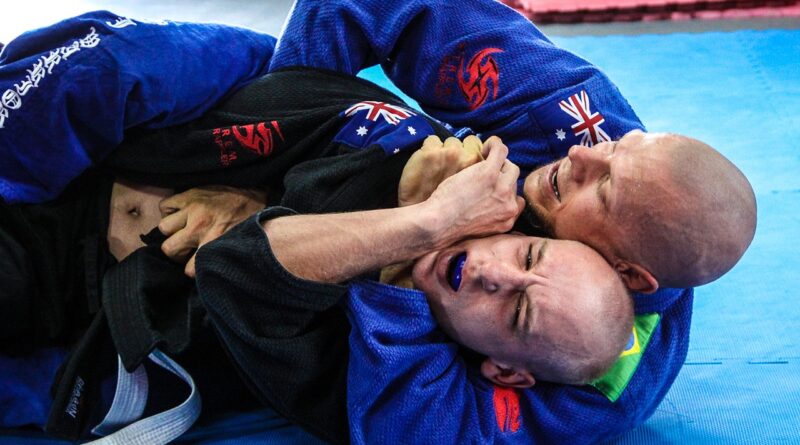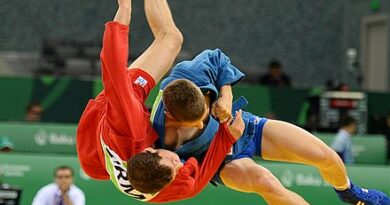Brazilian Jiu Jitsu (BJJ)
Table of Contents
-
- Introduction
- What is Brazilian Jiu Jitsu
- The History and the Origin of Brazilian Jiu Jitsu
- The Different Types of Brazilian Jiu Jitsu Techniques
- The Different Types of Brazilian Jiu Jitsu Gear
- The Benefits of Training Brazilian Jiu Jitsu for Fitness
- The Benefits of Brazilian Jiu Jitsu for Self-Defense
- Conclusion
Introduction
Brazilian Jiu Jitsu (BJJ) is a martial art and combat sport that focuses on grappling and ground fighting. It was developed in Brazil in the early 20th century by the Gracie family, and has since become one of the most popular martial arts in the world. BJJ is known for its effectiveness in self-defense, as well as its use in mixed martial arts (MMA) competitions. It is also a great way to stay in shape and learn self-discipline. BJJ is a great way to learn how to defend yourself, while also having fun and getting a great workout.
What is Brazilian Jiu Jitsu
BJJ is based on the principle that a smaller, weaker person can successfully defend themselves against a bigger, stronger opponent by using leverage and proper technique. It emphasizes the use of joint locks and chokeholds to control and submit an opponent. BJJ also incorporates throws, takedowns, and ground fighting techniques.
BJJ is a great way to stay in shape and learn self-defense. It is also a great way to build confidence and discipline. BJJ is a sport that can be practiced by people of all ages and skill levels. It is a great way to meet new people and make friends.
BJJ is a sport that can be practiced by people of all ages and skill levels. It is a great way to meet new people and make friends.
The History and the Origin of Brazilian Jiu Jitsu
Brazilian Jiu Jitsu (BJJ) is a martial art and combat sport that originated in Brazil in the early 20th century. It is a form of grappling that focuses on ground fighting and submission holds. BJJ is based on the traditional Japanese martial art of Kodokan Judo, which was developed by Jigoro Kano in the late 19th century.
The history of BJJ can be traced back to the early 1900s when Mitsuyo Maeda, a Japanese judoka, traveled to Brazil. Maeda had trained in the Kodokan Judo system and was an expert in the art of submission grappling. He was invited to Brazil by Gastão Gracie, a Brazilian businessman who had become interested in the art of judo. Maeda accepted the invitation and began teaching the art of judo to Gastão’s sons, Carlos, Oswaldo, Gastão Jr., and George.
The Gracie brothers quickly developed their own style of judo, which they called Gracie Jiu Jitsu. This style focused on ground fighting and submission holds, and was designed to give smaller, weaker practitioners an advantage over larger, stronger opponents. The Gracie brothers also developed a system of self-defense techniques that could be used in a real-life situation.
The Gracie brothers began to teach their style of jiu jitsu to other students, and eventually opened their own school in 1925. This school, the Gracie Academy, is still in operation today and is considered to be the birthplace of Brazilian Jiu Jitsu.
The Gracie brothers’ style of jiu jitsu quickly gained popularity in Brazil, and eventually spread to other countries. In 1993, the Ultimate Fighting Championship (UFC) was created, and Royce Gracie, a member of the Gracie family, won the first tournament using his family’s style of jiu jitsu. This victory helped to popularize BJJ around the world, and today it is practiced by millions of people in countries all over the world.
Brazilian Jiu Jitsu is a martial art that has evolved over the years, but its roots can be traced back to the early 1900s when Mitsuyo Maeda traveled to Brazil and began teaching the art of judo to the Gracie brothers. The Gracie brothers developed their own style of jiu jitsu, which focused on ground fighting and submission holds, and eventually opened their own school in 1925. Today, BJJ is practiced by millions of people around the world and is one of the most popular martial arts in the world.
The Different Types of Brazilian Jiu Jitsu Techniques
BJJ techniques can be divided into two main categories: standing techniques and ground techniques. Standing techniques involve the use of throws, takedowns, and other maneuvers to bring an opponent to the ground. Ground techniques involve the use of joint locks, chokes, and other submission holds to control an opponent and force them to submit.
Standing techniques in BJJ include throws, takedowns, and sweeps. Throws involve using the opponent’s momentum against them to take them off their feet. Takedowns involve using leverage and technique to bring an opponent to the ground. Sweeps involve using the opponent’s balance against them to take them off their feet.
Ground techniques in BJJ include joint locks, chokes, and submission holds. Joint locks involve using leverage and technique to control an opponent’s joints and force them to submit. Chokes involve using leverage and technique to restrict an opponent’s airway and force them to submit. Submission holds involve using leverage and technique to control an opponent’s body and force them to submit.
BJJ also includes a variety of other techniques such as escapes, counters, and transitions. Escapes involve using leverage and technique to escape from an opponent’s control. Counters involve using leverage and technique to reverse an opponent’s attack. Transitions involve using leverage and technique to move from one position to another.
BJJ is a complex martial art that requires a great deal of practice and dedication to master. It is important to learn the fundamentals of BJJ before attempting any of the more advanced techniques. With practice and dedication, anyone can become proficient in the art of Brazilian Jiu Jitsu.
The Different Types of Brazilian Jiu Jitsu Gear
Here is a guide to the different types of BJJ gear available.
Gi: The Gi is the traditional uniform worn by BJJ practitioners. It consists of a jacket, pants, and a belt. The Gi is designed to provide a secure grip for practitioners to use when grappling. It is also designed to be lightweight and breathable, so practitioners can move freely and stay cool during training.
Rash Guard: A rash guard is a form-fitting shirt made of spandex or polyester. It is designed to protect the skin from mat burns and other abrasions. Rash guards are also used to help keep the body cool during training.
Mouthguard: A mouthguard is a protective device worn over the teeth and gums. It is designed to protect the teeth and jaw from injury during training.
Protective Gear: Protective gear such as headgear, shin guards, and elbow pads can help protect practitioners from injury during training.
Training Gear: Training gear such as grappling dummies, mats, and training bags can help practitioners practice their techniques and improve their skills.
These are the different types of BJJ gear available. It is important to choose the right gear for your needs and skill level. With the right gear, you can practice BJJ safely and effectively.
The Benefits of Training Brazilian Jiu Jitsu for Fitness
One of the primary benefits of training BJJ is that it is an excellent form of cardiovascular exercise. BJJ involves a lot of movement, and it requires a great deal of energy and stamina. This makes it an ideal way to get your heart rate up and burn calories. Additionally, BJJ is a full-body workout that works all of the major muscle groups, helping to build strength and endurance.
BJJ is also a great way to improve flexibility and mobility. The techniques used in BJJ require a great deal of flexibility and range of motion, and training regularly can help to improve these areas. This can help to reduce the risk of injury and improve overall performance.
In addition to the physical benefits, training BJJ can also provide mental benefits. BJJ requires a great deal of focus and concentration, and it can help to improve mental clarity and focus. It can also help to reduce stress and anxiety, as it provides an outlet for physical and mental energy.
Finally, training BJJ can be a great way to make new friends and build relationships. BJJ is a team sport, and it requires a great deal of cooperation and communication. Training with others can help to build trust and camaraderie, and it can be a great way to make new friends and build relationships.
Overall, training BJJ can provide a number of physical and mental benefits. It is an excellent form of cardiovascular exercise, and it can help to improve strength, flexibility, and mobility. It can also help to reduce stress and anxiety, and it can be a great way to make new friends and build relationships. For these reasons, BJJ is an ideal choice for those looking to improve their overall fitness.
The Benefits of Brazilian Jiu Jitsu for Self-Defense
One of the primary benefits of BJJ for self-defense is that it teaches practitioners how to control an opponent without causing serious injury. BJJ practitioners learn how to use joint locks, chokes, and other techniques to control an opponent without causing serious harm. This makes it an ideal form of self-defense for those who want to protect themselves without resorting to violence.
Another benefit of BJJ for self-defense is that it teaches practitioners how to defend themselves in a variety of situations. BJJ practitioners learn how to defend themselves against strikes, grabs, and other forms of attack. They also learn how to defend themselves against multiple attackers. This makes BJJ an effective form of self-defense for those who may find themselves in dangerous situations.
Finally, BJJ is an excellent form of self-defense because it teaches practitioners how to remain calm and composed in stressful situations. BJJ practitioners learn how to remain focused and in control of their emotions, even when faced with a dangerous situation. This helps them to make rational decisions and take appropriate action in order to protect themselves.
In conclusion, BJJ is an effective form of self-defense because it teaches practitioners how to control an opponent without causing serious injury, how to defend themselves in a variety of situations, and how to remain calm and composed in stressful situations. For these reasons, BJJ is an excellent form of self-defense for those who want to protect themselves without resorting to violence.
Conclusion
In conclusion, Brazilian Jiu Jitsu (BJJ) is an effective martial art that has been proven to be effective in self-defense and competition. It is a great way to stay in shape, learn self-defense, and have fun. BJJ is a great way to challenge yourself and learn a new skill. It is a great way to stay active and healthy, and it can be a great way to make friends and build relationships. BJJ is a great way to learn discipline, respect, and humility. It is a great way to learn how to defend yourself and to become a better person.



